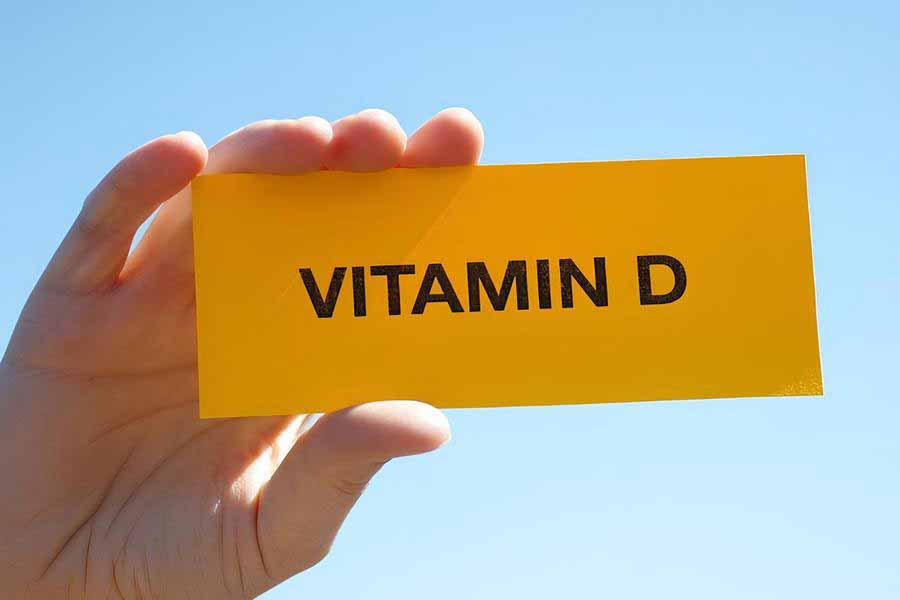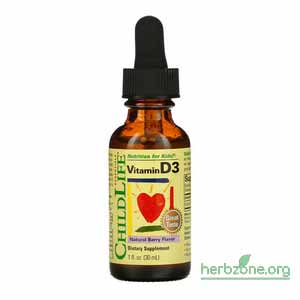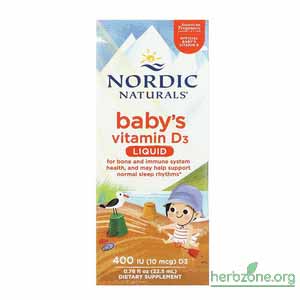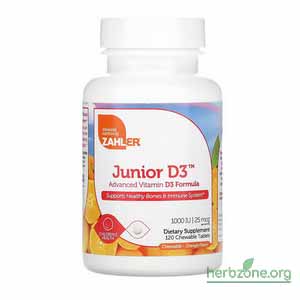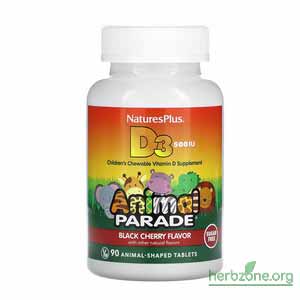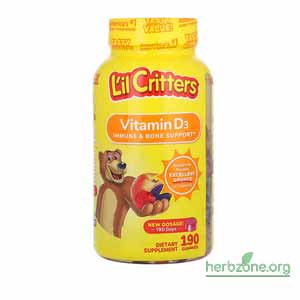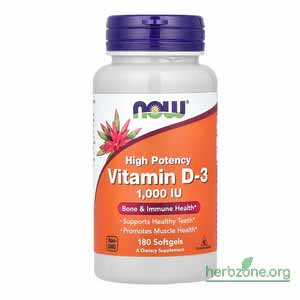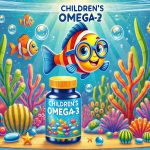Every mom knows how essential vitamin D is for a child’s healthy development. From the first weeks of life, pediatricians recommend giving this vitamin to prevent rickets, ensure proper bone formation, and promote overall harmonious growth. However, not all parents fully understand why vitamin D is so crucial and how to choose a quality supplement for their child. In this article, we aim to fill these gaps. Together with Herbzone, we’ll explore how to select the best vitamin D for children, why it’s necessary for kids of all ages, and review the Top 10 Supplements on iHerb.
In This Article:
- Why Vitamin D Matters for Kids
- Best Forms of Vitamin D for Children
- Dosage Recommendations by Age
- Choosing a Quality Vitamin D Supplement
- Top 7 Vitamin D Supplements on iHerb
Why Vitamin D Matters for Kids
Vitamin D plays a vital role in a child’s growth and development. It supports strong bones and teeth by promoting the absorption of calcium and phosphorus. Without sufficient vitamin D, bones can weaken, increasing the risk of conditions like rickets.
Additionally, vitamin D strengthens the immune system, helping the growing body fight off infections and viruses. It also regulates emotional well-being, reducing the risk of anxiety and fatigue, while supporting healthy brain and nervous system development – critical during periods of intense mental and physical activity.
| Key Functions of Vitamin D | Signs of Vitamin D Deficiency |
| Strengthening bones and teeth Supporting immunity Improving mood Aiding nervous system development | Frequent fractures or muscle weakness Slowed growth or bone deformities Reduced immunity and frequent colds Poor appetite and constant fatigue |

Best Forms of Vitamin D for Children
Vitamin D supplements come in various forms and dosages, allowing parents to choose the most convenient option depending on their child’s age and needs.
1. Liquid Drops
- Ideal for newborns and toddlers under three.
- Easy to measure with a dropper, ensuring accurate dosing.
- Neutral or pleasant flavors make them easy to mix into food or drinks.
2. Chewable Tablets or Gummies
- Popular among older children as they resemble sweets.
- Often flavored with natural ingredients like orange, strawberry, or grape.
- Parents must monitor intake to avoid overdosing.
3. Capsules
- Less commonly used for children due to swallowing difficulty.
- Suitable for older kids comfortable with taking pills.
- Generally more affordable than gummies or chewable vitamins.
4. Sprays
- Increasingly popular for their ease of use.
- Can be sprayed directly into the mouth, making them ideal for kids who dislike drops or tablets.
- Less common in some regions.
5. Powder
- Rarely used but convenient for mixing into food or drinks.
- Almost unnoticeable in meals.

Dosage Recommendations by Age
Like any other vitamin, D3 should be given to children in the correct amount. A deficiency will not provide the desired effect, while excessive intake can harm the body.
General recommendations suggest that infants under one year of age should receive 400-600 IU (International Units) of vitamin D daily. This helps prevent rickets, supports normal bone growth, and ensures proper tooth development.
For children over the age of one, the dosage is typically increased to 600-1,000 IU daily. During this period, the child grows actively, their musculoskeletal system develops, and vitamin D plays a crucial role in supporting this process. Depending on individual needs, lifestyle, and climate, a doctor may recommend a higher dose. For instance, children who spend little time in the sun or live in regions with prolonged winters may require additional vitamin D intake.
It’s important to note that the need for vitamin D may vary depending on other factors. For example, children with chronic conditions such as kidney or gastrointestinal disorders might have difficulty absorbing the vitamin. In such cases, a doctor may order specific blood tests to determine vitamin D levels and adjust the dosage accordingly.

Additionally, safety must always be considered. Exceeding the recommended doses can lead to vitamin D hypervitaminosis, which is harmful to the body. Symptoms of overdose include nausea, weakness, irritability, or even severe organ dysfunction. Therefore, supplements should only be given after consulting a pediatrician.
To ensure precise dosing, choose vitamin D formulations with a convenient dispenser, such as drops or sprays. This is especially important for infants, where every drop matters. For older children, consider their lifestyle and diet to effectively complement their nutrition.
What Dosage of Vitamin D Should Your Child Take?
- For infants under 1 year: 400-600 IU daily.
- For children aged 1–16 years: 600-1,500 IU daily.
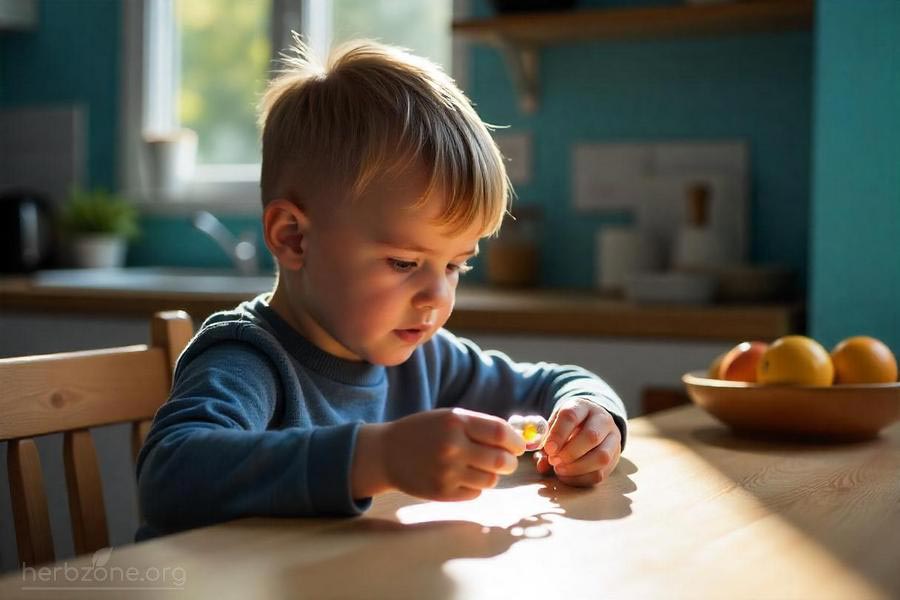
Choosing a Quality Vitamin D Supplement
When selecting a vitamin D supplement, consider the following factors:
- Form of Vitamin D:
- Vitamin D3 (cholecalciferol) is the preferred form as it’s more natural and effectively absorbed than D2.
- Choose a form convenient for your child, such as drops, gummies, or chewable tablets.
- Additional Ingredients:
- Opt for supplements free from artificial colors, preservatives, and excess sugar.
- Ingredients like coconut or olive oil enhance absorption.
- Certification:
- Look for certifications like GMP, NSF, or USDA Organic, ensuring the product meets high safety and quality standards.
- Dosage:
- Ensure the supplement includes clear dosing guidelines tailored for different ages.
- Brand Reputation:
- Choose reputable manufacturers specializing in children’s supplements. Check reviews and ratings on platforms like iHerb.
- Ease of Use:
- For infants, liquid forms with droppers are best. For older kids, consider gummies or chewable tablets.
- Natural Origin:
- Vitamin D derived from natural sources, such as lanolin, offers better bioavailability.
- Taste:
- Pleasant flavors make it easier for kids to take their vitamins, but ensure the flavorings are natural.
- Special Needs:
- Consult your doctor if your child has allergies or specific health needs.

Top 7 Vitamin D Supplements on iHerb
ChildLife Essentials Vitamin D3
- Form: Liquid drops
- Features: Natural orange flavor, precise dosing
- Advantages: Free from artificial preservatives
Nordic Naturals Baby’s Vitamin D3
- Form: Liquid drops
- Features: Contains olive oil for enhanced absorption
- Advantages: Suitable for newborns (0-12 months)
Zahler Junior D3
- Form: Chewable gummies
- Features: For older children, 1,000 IU per serving
- Advantages: Pleasant fruity flavor
NaturesPlus Animal Parade Vitamin D3
- Form: Chewable animal-shaped tablets
- Features: Sugar-free
- Advantages: Fun and appealing for kids
L’il Critters Vitamin D3
- Form: Gummies
- Features: Contains 2% oil blend for better absorption
- Advantages: Loved by kids
California Gold Nutrition Vitamin D3 Gummies
- Form: Gummies
- Features: Free from gelatin, soy, gluten, and GMOs
- Advantages: Great taste
NOW Foods Vitamin D3 1,000 IU
- Form: Capsules
- Features: Oil-based for better absorption
- Advantages: Affordable
Use the iHerb promo code ANB8206 to get a discount of 5% to 30% on all orders.
The promo code can be used without any restrictions and applies to every purchase you make!
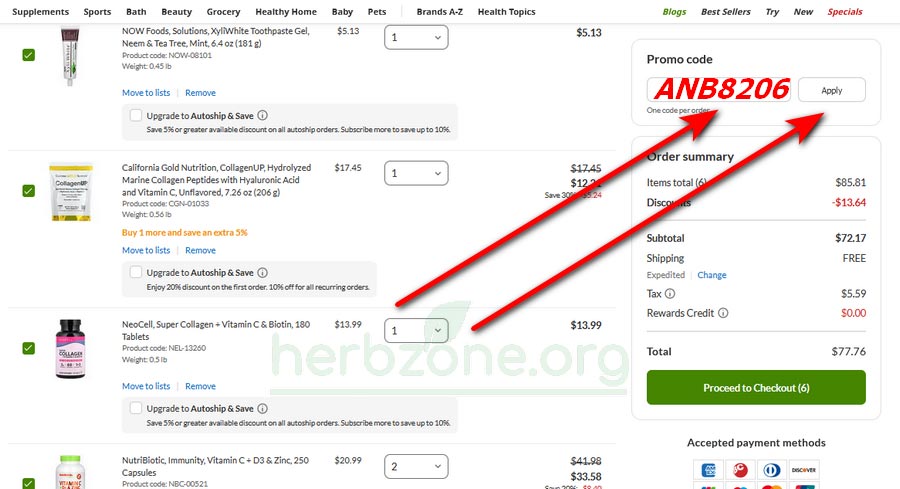
Conclusion
How to Choose Vitamin D for Children?
Pay attention to the form (drops, gummies, chewable tablets), ingredient quality, and certifications. It’s essential to choose supplements from trusted brands and avoid exceeding the recommended dosage.
Which Vitamin D is Best for Children?
The best vitamin D supplement for children depends on their age, preferred form, and individual needs. Popular options include:
NaturesPlus Animal Parade Chewables – Fun chewable tablets with child-friendly flavors.
ChildLife Essentials Vitamin D3 Drops – Perfect for infants.
California Gold Nutrition Vitamin D3 Gummies – Tasty gummy candies for older children.
What Happens if a Child Doesn’t Get Vitamin D?
If a child doesn’t receive enough vitamin D, it can lead to a deficiency that negatively affects bone formation and skeletal development. In infants and young children, vitamin D deficiency increases the risk of:
- Rickets: Weak, soft bones.
- Muscle Weakness: Delayed physical milestones.
- Stunted Growth: Slowed overall development.
- Weakened Immune System: Increased susceptibility to infections.
Providing adequate vitamin D is crucial for healthy growth, strong bones, and a robust immune system.
